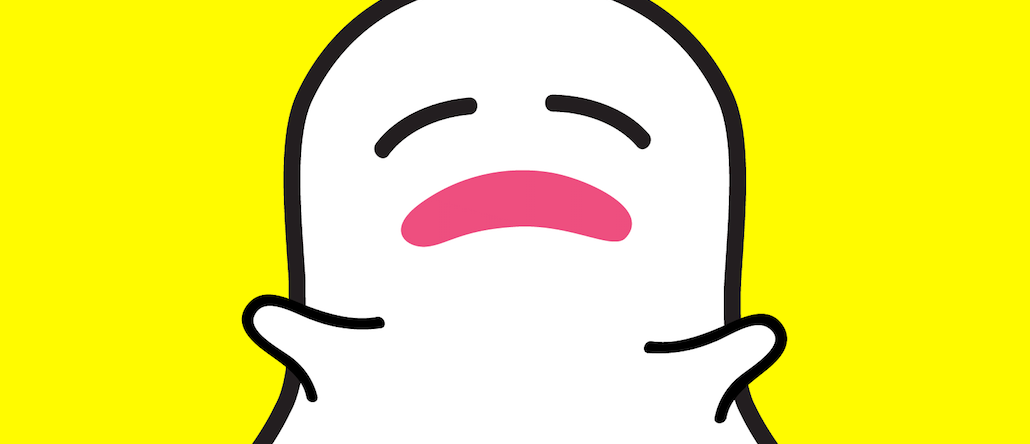
Snapchat has a drinking problem. Alcohol brands say they are hesitant to spend money on Snapchat, citing concerns about the platform’s ability to verify that ads are only served to people 21 and up and the overwhelming numbers of younger people who use the app.
Regulations mandate that alcohol brands can only buy ads on platforms and on publishers’ sites where 72 percent of the audience is over age 21. Alcohol advertising in the U.S. increased more than 400 percent from 1971 to 2011, according to a University of Texas at Austin study. Spend was $475 million in 2014.
Snapchat’s users’ ages break down as follows, according to a spokesperson: 22 percent are between 13 and 17; 36 percent (the largest demographic) are 18 to 24; 27 percent are 25 to 34; and over 15 percent are over 35. The company has not released a stat on the 21-plus group. An eMarketer report released this week found that Snapchat will overtake Facebook and Instagram among the 12-to-17 and 18-to-24 age groups in the U.S. this year.
Felix Palau, director of global marketing for Heineken, said the beer maker chose not to have an active profile on Snapchat because he doesn’t think the age filtering is effective enough. “We haven’t found a way to reach age-appropriate consumers on Snapchat,” he said.
Heineken has experimented with Snapchat around Coachella by using geofenced filters, but according to Nourdin Rejeb, Heineken’s global manager for digital, its paid work with the platform is still in early stages. “We absolutely want to make sure we don’t expose our content to minors,” he said.
Jayme Buonocore, digital director at William Grant & Sons distilleries, said the same: “At the moment, the Snapchat community skews too young for us to feel comfortable using some of their advertising products,” specifically the filters since they are most likely to be passed around. “I am a big fan of Snapchat as a platform, and I see so much potential there for our brands. We just have to wait for the demographics of the community, or the advertising options, to catch up to our responsibilities as marketers of spirits.”
Snapchat does have age-gating. As of 2013, all new Snapchatters are required to enter their birthdays when creating Snapchat accounts. The percentage of users above 21 has also increased, said brand execs.
That means brands can limit ads to people 21 and up, but those people can still send Snaps with sponsored geofilters or lenses to underage friends. There is simply no way to verify how old the recipient is, which is the concern.
Sailor Jerry, a rum brand owned by William Grant & Sons, used Snapchat for an activation for Fleet Week New York last year. But senior brand manager Josh Hayes said the brand hasn’t done so since. “Our legal department doesn’t like the percentage of younger people that are on Snapchat,” he said. “Our legal department can be a little conservative sometimes.”
For Campari, the issue is less about being able to advertise on Snapchat than advertising on it successfully. Referencing how other brands have done it, Dave Karraker, vp of marketing at the company, said brands have to build in layers that verify a user’s age at multiple entry points for every activation.
Karraker pointed to Jameson, the first alcohol brand to run national geofilters when it launched an age-gated geofilter last March. It also ran ads within Live Story for St. Patrick’s Day. Jameson had to create multiple layers to ensure that it met age guidelines. According to Jeffrey Moran, vp of influencer engagement and marketing activation at Pernod Ricard, the company went an additional step by putting essentially a “do not forward to anyone under 21” message on the filter itself. The brand was also very specific and used geotargeting to address certain neighborhoods only for activations for Jameson and its sister brand, Malibu. “In many ways, we’re trying to be part of the solution to figure out how to fix this and be responsible,” said Moran.
“Any layer has people drop off, any layer between you and your content,” said Karraker. “Ultimately, here’s a platform that is clearly a favorite of underage individuals. Why would you focus your efforts over there when I can just go to Instagram, which now has Stories?”
Karraker’s media team felt that Snapchat was resistant to working with alcohol brands in the early days because of its rudimentary age-gating features. Meanwhile, Instagram increased in popularity and released Stories, leading Campari to focus its attention there.
“In addition, we tend to focus on Instagram because of broad reach, potential for engagement and sharing (not just consumption like Snap), research capabilities and media buying efficiencies,” said Karraker. “Instagram is a better platform for our very visual marketing style for our brands and cocktails and for the sharing of cocktail recipes, which is very important brand-consumption lever.”
Ultimately, brands seem to prefer advertising on Instagram, which has more stringent age-gating and doesn’t skew younger — and has other benefits, such as a larger active user base and more discoverability.
“The great thing is, as much as I love Snapchat, with Facebook Live and Instagram Stories, we are able to achieve the same thing in different places,” said Hayes.
Contributing: Seb Joseph
More in Marketing

Pitch deck: How Amazon is recasting Twitch as a core part of its CTV pitch
Amazon is positioning Twitch as a defining asset in its CTV ambitions.

Netflix transforms former mall department stores into experiential venues
The location in Dallas opens this week, and one at the King of Prussia mall near Philadelphia opened last month.

Future of Marketing Briefing: AI has created a new talent paradox in programmatic agencies
The job isn’t execution anymore. AI handles that. The job is judgement.







